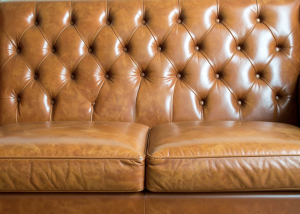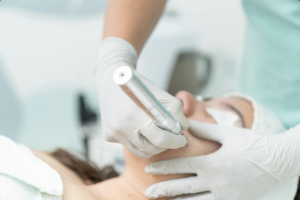What to Expect In Your First Mammogram: Costs and Guides
It is understandable if you are nervous about your first mammogram. However, the procedure is simple and quick, and the attending staff is usually very reassuring. Knowing what to expect will put your mind at ease.
Mammography is the technology used to examine breasts for signs of cancer or other abnormalities. Mammography uses low-energy X-rays to create breast images called mammograms.
The purpose of mammograms is to help doctors diagnose breast disease in women who experience symptoms like breast pain, a lump, or nipple discharge. Women who have no symptoms should also undergo regular mammograms to detect any abnormality before it manifests in clinical symptoms.
There are two types of mammograms: a screening and a diagnostic mammogram. The screening mammogram is an exam that women have every year as a routine check-up. A diagnostic mammogram is done to diagnose breast issues such as pain in the breast, a lump, nipple changes or discharge. If you have any of these issues, a professional mammogram facility will perform a diagnostic mammogram.
Combined with a physical examination, mammography is the most effective way to detect early signs of breast cancer. Early detection improves prognosis and survival rates.
When Should You Have Your First Mammogram?
Experts generally suggest that most women begin getting annual mammograms at age 40. Women who have a family history of breast cancer or genetic mutations of the BRCA gene are usually advised to start earlier with mammograms.
Things to Keep in Mind When You Plan on having a Mammogram
- If you are still menstruating, keep it in mind when you schedule your appointment. Breasts are usually tender before and during a period, so schedule your appointment after you complete a cycle.
- Don’t wear deodorants or antiperspirants under your arms or perfumes, talcum powders or lotions on your breasts when you go for your mammogram. These kinds of products contain substances that may show up on mammograms and make them harder to decipher. If you forget, tell the technologist and ask for a wipe to remove it.
- Don’t wear a dress or jumpsuit. Opt for a two-piece outfit so you can easily change into the gown provided to you.
- On the day, don’t wear pendants or necklaces that may get in the way during the process. Also, opt for small earrings rather than dangling ones. You will probably be asked to remove your glasses.
- If you have long hair, tie it back so it doesn’t fall onto your chest and become part of the image.
- Take your doctor’s details to the mammography facility so they can send your results to your doctor.
- If you previously had a mammogram at another facility, share your results with the new centre before your appointment.
Cost Of Mammograms in Singapore
The Singapore’s Health Promotion Board has a Screen for Life (SFL) program which offers subsidised mammogram screenings for women aged 50 years and above. Under this program, the following costs can be expected for a mammogram:
- S$50 for Singapore citizens
- S$75 for permanent residents.
- $37.50 for Merdeka Generation Cardholders
- $25 for Pioneer Generation Cardholders
Moreover, patients can also use their MediSave to pay for mammograms at designated locations. The Singapore Cancer Society also offers free mammograms to women aged 50 and above who have not had a mammogram screening in the past two years.
What to Expect on the Day
When you arrive, you will register and provide all the necessary information required.
Next, you’ll go to a private change room to exchange your upper garment for a robe provided by the mammography facility.
Before the mammogram is taken, you can discuss any questions you have and any issues you may have noticed regarding your breasts. Inform the radiologic technologist of any changes in your breasts or underarm area.
Taking the Mammogram
You will stand in front of the mammography unit. It contains a flat surface on which the technologist will place your breast and then compress it gently with a plastic paddle.
The compression may be somewhat uncomfortable, but it is a crucial part of the procedure as it helps spread out the breast tissue, so the image is taken of a relatively thin layer of tissue, which makes for better images. Most women report feeling pressure, not pain.
What If You Have Sensitive Breasts?
Mammograms are not supposed to be painful. If you have sensitive breasts, discuss this with the technologist so steps can be taken to ensure a more comfortable experience. If you are really worried, talk to your doctor before your appointment. You might be able to take a painkiller an hour before your appointment.
Each compression only lasts a few seconds, and the unit immediately releases the compression paddle once an image is taken.
How Long Does a Mammogram Take?
Taking the images will take around 15 minutes. Various mammograms from different angles will be taken. You will be asked to hold very still and may be required to stop breathing for a few seconds when an image is taken to ensure no movement interferes with the quality of the mammograms.
Analysis and Discussion
Once the images are taken, they will be analysed by a radiologist or a professional technologist. Depending on the results, further tests, such as a breast ultrasound or an MRI, might be required to clear up any uncertainties. This is often the case with women with dense breast tissue. Additional tests are often performed because dense breasts make it difficult for mammography to detect tumours.
When all the imaging is done and analysed, the technician will send your mammography report to your doctor who will then discuss the results with you.
It’s important to keep a record of your mammogram results for future reference. Comparing current mammogram images with prior images can be invaluable when interpreting breast changes.
Conclusion
If you’ve never had a mammogram before, knowing what to expect and how to prepare for this essential cancer screening exam can put your mind at ease and ease any anxiety you might feel about the procedure.
The important thing is to regularly have a screening. Regular screening helps to detect breast cancer at an early stage even before symptoms are experienced and when treatment is more likely to succeed.
Related Articles
Your Guide to Buying a Full-Grain Leather Sofa in Singapore
Not many items of furniture carry as much importance in a dwelling as the sofa. It is the focal point of the living room, cradling voluminous conversations and enduring years…
How to Pick an Ideal Aesthetic Clinic in Singapore? Safety, Prices, and Factors to Consider
Key Insights The Relevance of Selecting the Perfect Aesthetic Clinic You will find a lot of aesthetic treatment centres here in Singapore. There’s Botox, fillers, boosters to the skin, and…
From Incorporation to Expansion: The Complete Guide to Business Consulting Services in Singapore
Starting or expanding a business in Singapore can feel like standing at the edge of possibility. The opportunities are vast, including access to Asia’s markets, a pro-business government, and world-class…


